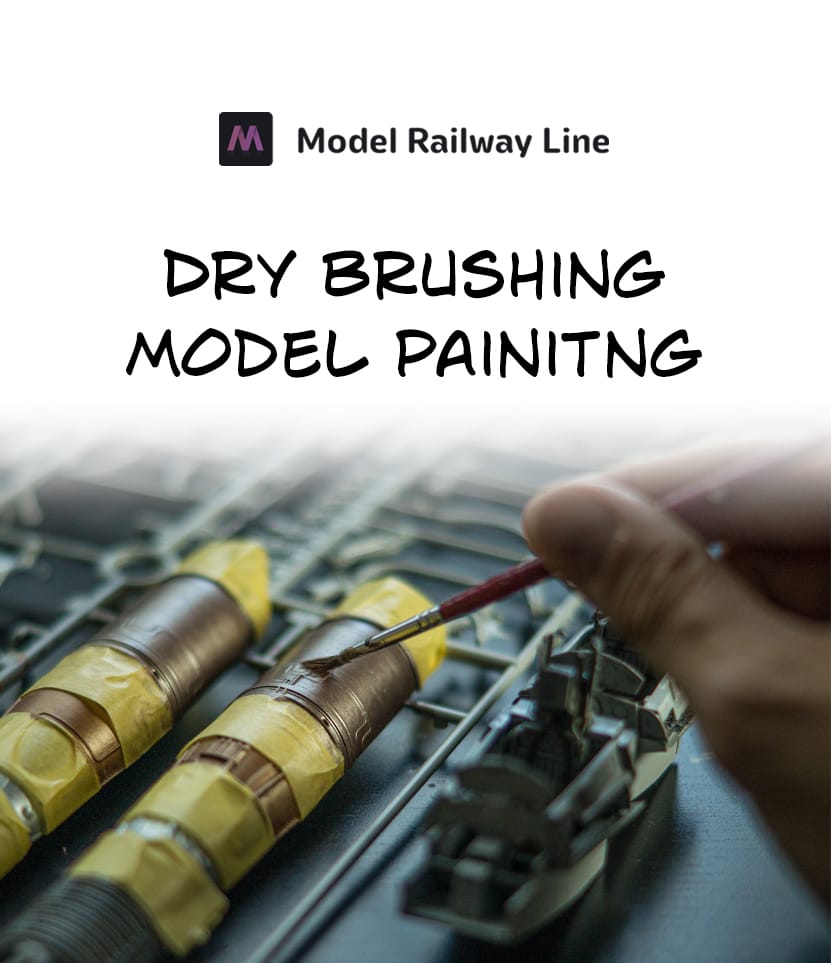Dry Brushing - Tips for Realistic Miniature and Model Painting
Discover these essential dry brushing tips for realistic model and miniature painting that add depth and character to any model scenery layout.

When painting model scenery we're always looking to achieve a realistic and quality finish to our models, miniatures and buildings.
One of the techniques that can be used to achieve this is dry brushing.
But what does dry brushing involve, how easy is it, and what's the best drybrush technique to use for realistic model scenery?
In this guide we'll answer these questions and cover some key tips and methods that are essential for adding realism to models and miniatures on a model scenery layout.
What is dry brushing?
Dry brushing is a technique in scale model painting that's used to bring out detail in textures and raised surface areas on a model or miniature that would otherwise be lost using normal painting methods.
Using dry brushing will allow increased levels of realism to be obtained on models through the application of additional surface depth that's used to add character and weathering effects to scenery elements.
Simply put, dry brushing is achieved using a short flat brush with a minimal amount of paint that's applied carefully to raised sections of a model. Layers are gradually built up using multiple passes to obtain a quality finish.
Let's take a look at this method in greater detail.
What is the best brush for dry brushing miniatures?
A brush with short flat bristles is the best choice for dry brushing miniatures and models.
Either soft or stiff bristles can be used depending on the technique or the finish desired.
- Soft bristles are best for areas of subtle shading.
- Stiff bristles are more suited to enhancing highlights.
It's not necessary to choose high quality paint brushes for drybrushing techniques. Any paint brush brand is acceptable, providing the brushes used do not lose their bristles easily.
How to dry brush miniatures
There are three steps that you'll need to carry out in order to drybrush miniatures and models effectively and to ensure the best finish is obtained.
The best dry brushing technique for models is the 'Mix, Soak, Apply' method.
Let's take a look.
1) Mix the paint
The first step is to mix up the paint to get the required color. Try to use a consistency that's slightly thinner than would be used for more conventional painting techniques. This helps to ensure it's applied more easily.
2) Soak the brush
Dip your brush into the paint and ensure all the bristles are well soaked. Then remove as much of the paint as possible by wiping the brush on a textured surface or a paper towel.
Take care not to leave an excessive amount of paint on the brush.
Remember, you're aiming to apply the minimum amount of paint to the model to achieve the desired finish. It's always best to try painting on a test piece first (you can use something as simple as a spare bit of plastic for this) to make sure the brush is well covered with a thin layer of paint.
You'll also want to use a short flat brush to ensure the accuracy and quality of the finish.
Soft bristles are best for subtle shading while stiffer brushes are best for highlighting areas of detail.
3) Apply the paint
Using a light pressure, gently draw the brush back and forth on the high spots of the model.
Repeat this process numerous times - the best finish is obtained when the paint is gradually built up over many passes.
It's important to use the correct direction when painting - this should be perpendicular to raised details and any edges.
You'll also need to be careful to prevent the paint drying on the brush. You might need to clean the brush multiple times during painting to ensure the paint stays fresh.
Following these steps will ensure that you get a high quality drybrush finish to your models and miniatures.
Can dry brushing be used to paint model railroad miniatures?
Drybrushing is a technique that's often overlooked when building a model train layout.
There are many areas that can benefit from the dry brushing techniques we've outlined in this guide.
Model railroad buildings can benefit from drybrushing, particularly on high detail parts such as brickwork. Vehicles and miniatures can be dry brushed as well - these all help to improve the overall quality of the detail and really complement the overall scenery effects that are contained within the layout.
For more information on how to improve the scenery on your model railroad be sure to check out our model scenery guides where we explain the best tips and techniques for achieving high quality finishes to scenery that complement your model trains.

